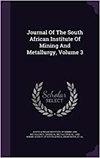A limit equilibrium approach to the use of stability bunds in the design of HDPE-lined tailings storage facilities
IF 0.9
4区 材料科学
Q3 Materials Science
Journal of The South African Institute of Mining and Metallurgy
Pub Date : 2022-08-03
DOI:10.17159/2411-9717/1787/2022
引用次数: 1
Abstract
In recent years the requirements for a barrier system between the waste body of tailings storage facilities (TSFs) and the natural ground (NG) has necessitated the use of HDPE-lined TSFs in South Africa and other countries. The addition of an HDPE liner creates an interface between, inter alia, the tailings and surrounding soils on the footprint of the TSF. It is known that low-strength materials beneath slopes can cause slope instability. One method which can theoretically mitigate this instability of a lined TSF is the addition of stability bunds along the footprint of the TSF. Altering the profile of the footprint to include slope changes which oppose the direction of the failure creates passive slices in a limit equilibrium analysis. The passive slices actively oppose the movement of active slices, resisting the mobilization of tailings, thus greater active slice forces are required to develop a failure surface running along the liner interface. Two scenarios are presented and compared. The first scenario retains the ground profile unaltered and the second scenario includes stability bunds along the ground profile. An in-depth assessment is made of the interslice forces and the interface shear stresses for each scenario. The theoretical background is discussed in greater detail to determine the mechanisms of reinforcement provided by the bunds.稳定带在高密度聚乙烯衬砌尾矿贮存设施设计中的极限平衡方法
近年来,由于需要在尾矿储存设施的废料体与自然地面之间建立屏障系统,南非和其他国家必须使用高密度聚乙烯衬里的尾矿储存设施。添加HDPE衬垫在TSF足迹上的尾矿和周围土壤之间创建了一个界面。众所周知,边坡下的低强度材料会引起边坡失稳。理论上可以减轻这种不稳定性的一种方法是沿着TSF的足迹增加稳定带。在极限平衡分析中,改变足迹的轮廓以包括与破坏方向相反的斜率变化,从而产生被动切片。被动片主动对抗主动片的运动,抵制尾矿的动员,因此需要较大的主动片力来形成沿衬板界面运行的破坏面。提出并比较了两种情况。第一种方案保持地面剖面不变,第二种方案包括沿地面剖面的稳定带。对每一种情况下的夹层力和界面剪应力进行了深入的评估。更详细地讨论了理论背景,以确定由带提供的强化机制。
本文章由计算机程序翻译,如有差异,请以英文原文为准。
求助全文
约1分钟内获得全文
求助全文
来源期刊
CiteScore
1.50
自引率
11.10%
发文量
61
审稿时长
4-8 weeks
期刊介绍:
The Journal serves as a medium for the publication of high quality scientific papers. This requires that the papers that are submitted for publication are properly and fairly refereed and edited. This process will maintain the high quality of the presentation of the paper and ensure that the technical content is in line with the accepted norms of scientific integrity.

 求助内容:
求助内容: 应助结果提醒方式:
应助结果提醒方式:


